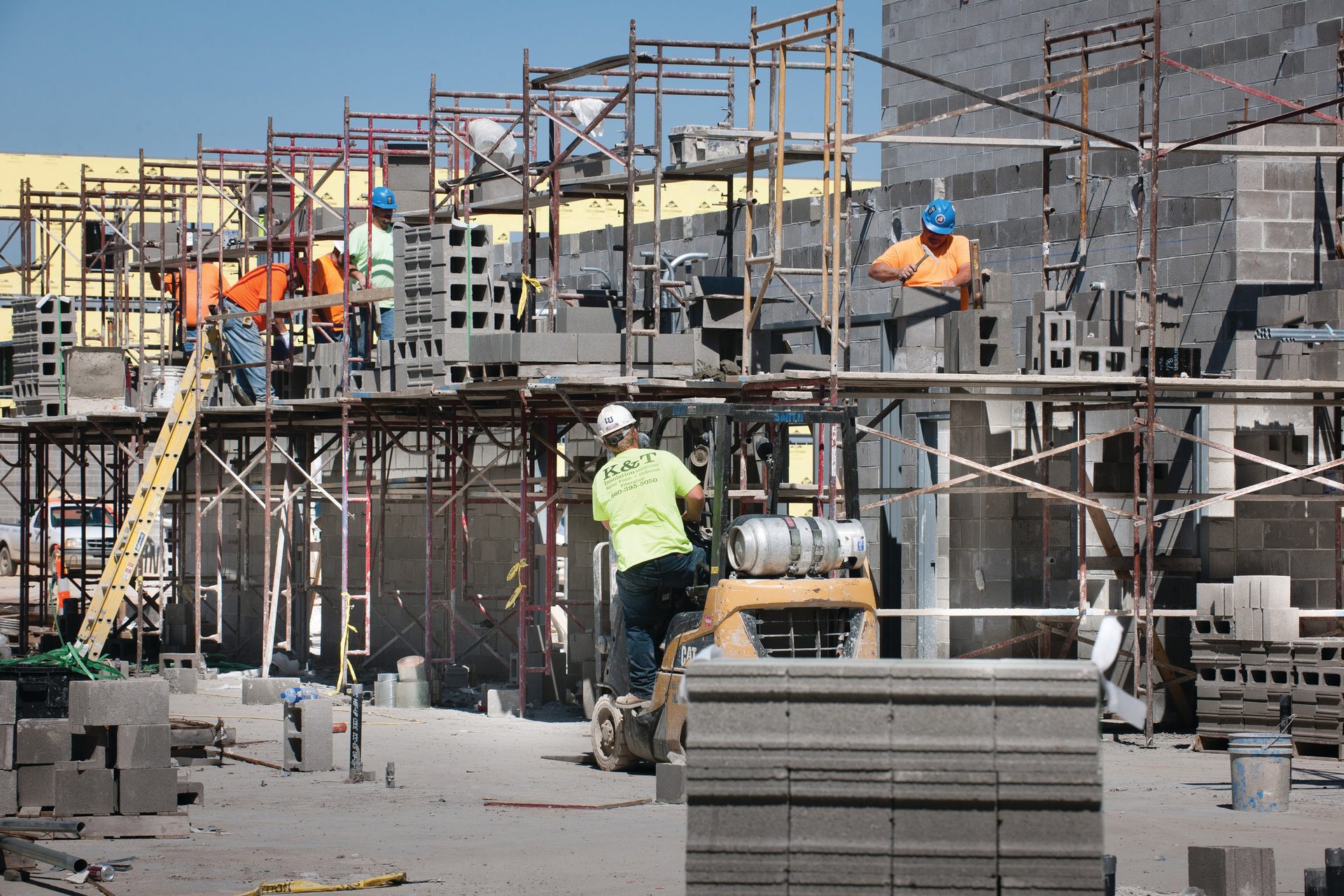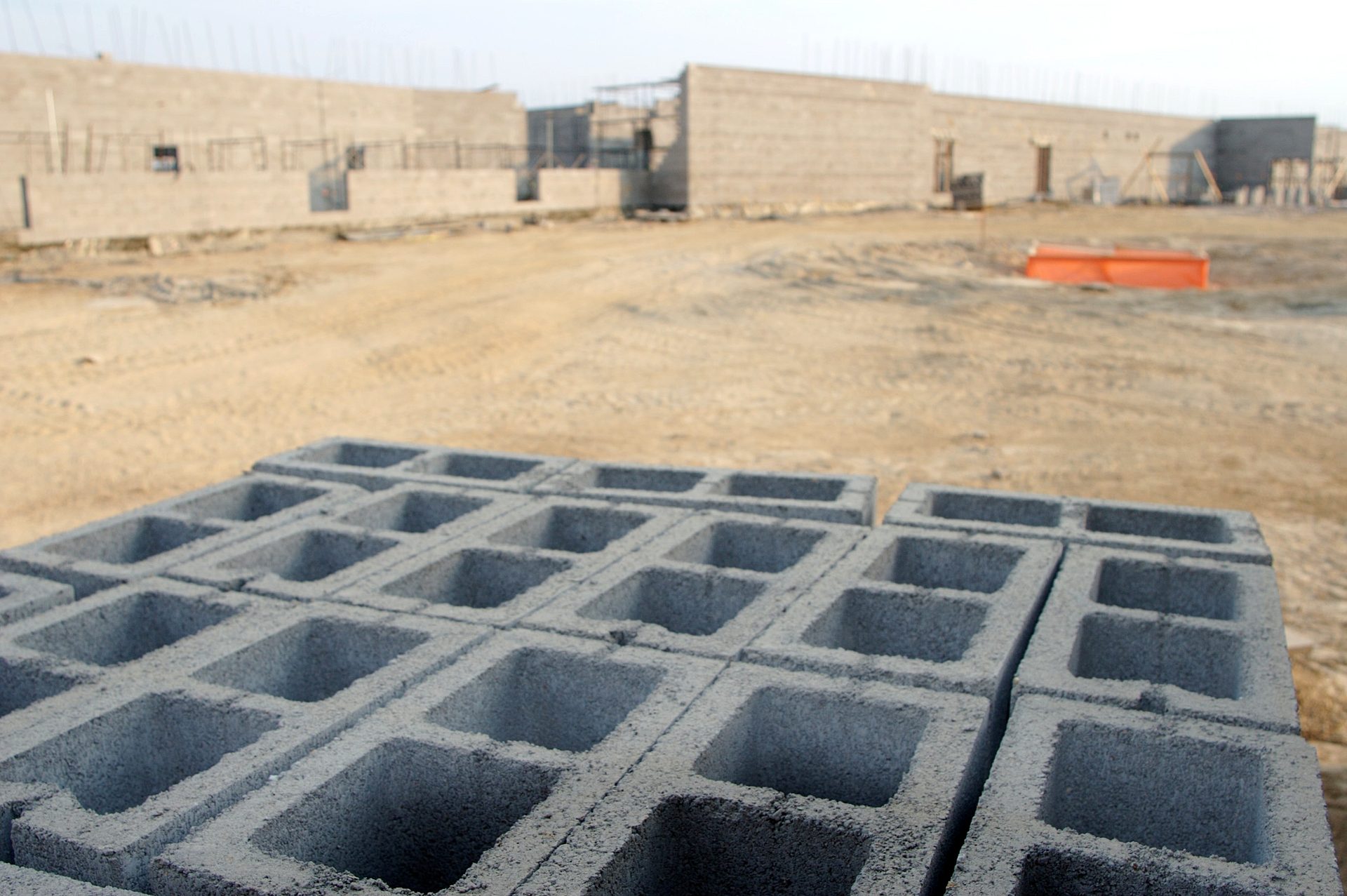Lightweight Concrete Block:
Making a Strong Case for Energy-Efficient Buildings
Lightweight concrete makes buildings more environment-friendly and insulates better than heavyweight concrete. By Daron Brown
The earliest versions of concrete block, commonly known as cinder block—and referred to in specifier language as concrete masonry units—arrived onto the building scene over a century ago. CMU quickly gained a reputation as an economical building material that met many practical design needs. In 1923, the first lightweight concrete block was introduced. Its key ingredient (other than Portland cement) was an expanded shale, structural grade lightweight aggregate.
Expanded shale, clay or slate lightweight aggregate (ESCS LWA) is made by expanding raw shale, clay or slate in a rotary kiln at temperatures reaching 2,200 degrees Fahrenheit while the material softens and bubbles. As the material cools down, the bubbles form an unconnected network of pores surrounded by a hardened, high-quality ceramic material. This “clinker” material is then crushed or screened into standard aggregate gradations. The result is a lightweight, low-density and structurally strong material used predominantly by concrete product manufacturers.
Today, modern lightweight CMU manufacturers use an optimum concrete mixture containing 65-70 percent ESCS LWA by volume. The result is a “jack-of-all-trades” CMU with a high strength-to-weight ratio that exceeds ASTM’s minimum 2,000-psi strength requirement. Lightweight CMU also provides excellent fire resistance, strong sound absorption, and transportation and jobsite efficiencies due to its lightweight composition.
But did you know that lightweight CMU can also enhance a building’s energy performance when used in exterior walls? In application, the material’s excellent energy-saving properties can help building and design professionals meet a project’s sustainability and carbon reduction goals.


Supporting energy-efficient buildings, sustainability and carbon reduction goals through the lens of thermal mass and reduced thermal bridging
Evaluating a building’s energy efficiency is complex, but one of the most widely understood factors is exterior wall R-Values. Typically, the higher the R-Value, the more energy-efficient the building. This, and all other contributing factors, including thermal mass benefits, are outlined in ASHRAE 90.1 – Energy Standard for Buildings Except Low-Rise Residential Buildings. This framework serves as the basis for almost every energy code in the United States.
When examining how lightweight CMU used in exterior walls can impact a building’s energy performance, there are two critical points of understanding beyond R-value: thermal mass and thermal bridging.
Thermal Mass
Thermal mass (or thermal inertia) describes the reluctance of a material or a wall to change temperature and its ability to absorb, store and later release significant amounts of energy. Lightweight CMU is slower to respond to temperature changes compared to many other building materials, including heavyweight CMU. This thermal lag, in combination with lightweight CMU’s high R-value, delays and reduces the peak energy load placed on power plants. Both factors contribute to a more energy-efficient envelope and in turn, support sustainability and carbon reduction goals.
Thermal lag is also sometimes referred to as the “flywheel effect.” As the outdoor air temperature fluctuates, lightweight CMU is slower to respond to these changes. When temperatures rise, lightweight CMU remains cooler. Alternately, with dropping air temperatures, it will not cool off as quickly as other building materials, including heavyweight CMU. The ability to moderate temperature swings plays a critical role in ensuring that a building’s HVAC systems can run efficiently. In turn, this helps conserve energy while providing comfortable indoor temperatures for building occupants.
Thermal Bridging
The American Concrete Institute defines a thermal bridge as “a material or component having a higher thermal conductivity penetrating through a material or component having a lower thermal conductivity.” For example, metal studs or fasteners that penetrate insulation are thermal bridges. Similarly, although not as damaging as metal, the concrete cross webs in an insulated CMU are also thermal bridges. However, because lightweight aggregate is considered a highly-insulative material, lightweight concrete products made from it will also exhibit insulating properties. As a result, insulated lightweight CMU will deliver two to three times higher exterior wall R-values than a wall designed with insulated heavyweight CMU.
Looking ahead
The growing emphasis on green design principles that support a project’s energy-efficiency, sustainability and carbon-reducing goals continues to challenge professionals and building owners alike. To meet this difficulty, architects and designers are specifying high-performance building materials and products that support energy-wise building construction. In turn, the concrete masonry industry can continue to make its contribution to a greener and healthier planet.
To learn more about lightweight CMU made with ESCS LWA and its contributions to energy conservation, sustainability and carbon reduction goals, visit www.escsi.org/sustainability-without-compromise/.
Images courtesy of Expanded Shale, Clay and Slate Institute.
Daron Brown is the National Accounts Manager for Arcosa Lightweight. Brown has nearly 20 years of experience working with concrete products and has spent the last 12 years working in the lightweight aggregate industry. He has worked with multiple concrete masonry producers in their production of lightweight block and is currently the Expanded Shale, Clay and Slate Institute’s Masonry Committee Chair.
